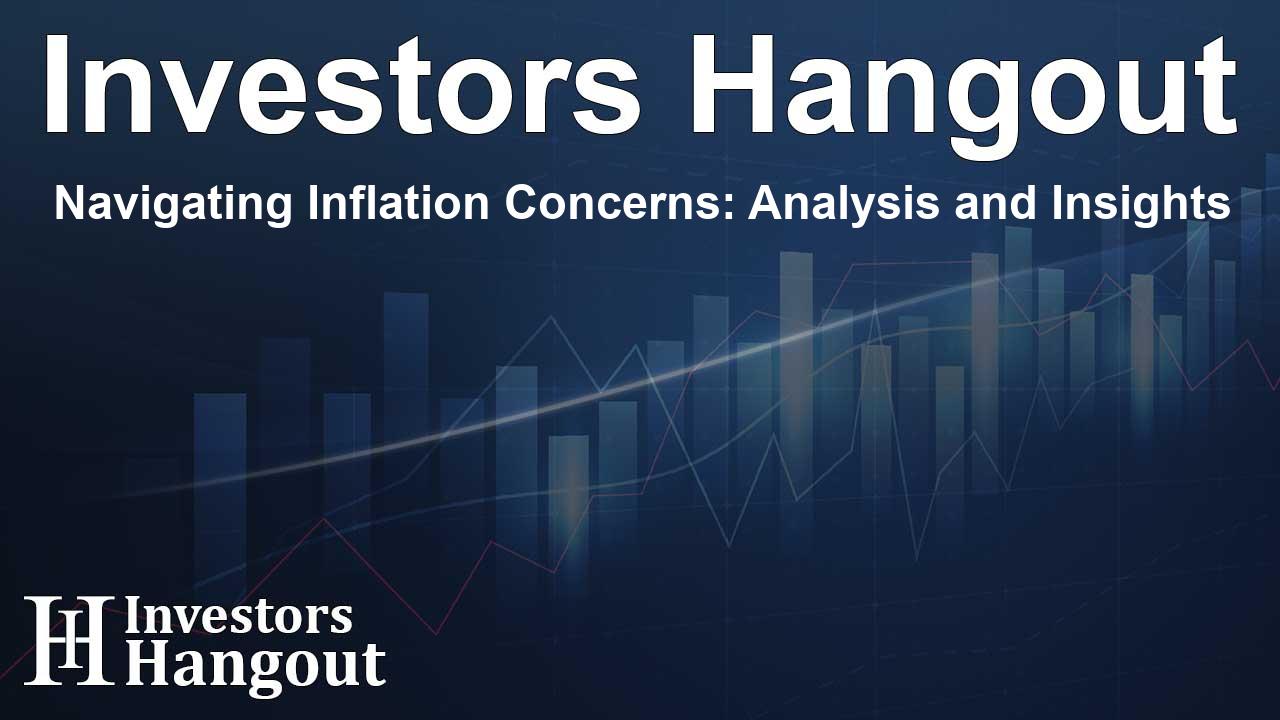Navigating Inflation Concerns: Analysis and Insights

Understanding Inflation Trends
Recently, we have observed that inflation, as indicated by the Consumer Price Index (CPI), rose significantly. This increase prompts important questions regarding our current economic environment and what we should be concerned about moving forward. Data revealed a rise of 0.47%, accompanied by a somewhat disappointing core CPI advance of 0.45%. Such fluctuations remind us that inflation can be unpredictable, and it's vital to approach these figures with a balanced mindset.
Staying Calm Amidst Fluctuations
Taking a step back, it’s crucial to understand that one month's data shouldn't dictate our strategies or fears. Federal Reserve Chair Powell wisely notes that the Fed does not overreact to temporary surges or drops in data, and we should adopt a similar approach. The January CPI figures, although not ideal, might not signify a consistent trend towards inflation.
Reflecting on last year, we saw strong CPI prints early in the year followed by a cooling down in the following months, leading to a better outlook by December. January often generates surprises with CPI figures, making it premature to judge disinflation or predict Federal Reserve rate adjustments in the near future based solely on this single metric.
The core services sector showed distinct patterns as well. While categories like transportation and recreation services drove significant increases, other sectors remained stable or exhibited less volatility. This indicates that January’s surge may be more situational rather than indicative of a widespread economic issue.
A Note of Caution
Despite the positivity in some interpretations of January's CPI, there are continual concerns regarding inflation trends. Recent months have presented core CPI figures at or above 0.3%, which raises questions about whether disinflation is genuinely taking hold. January often serves as a benchmark for price adjustments in numerous industries, and without sufficient scrutiny, it is easy to misinterpret these movements.
The potential for residual seasonality—meaning seasonal adjustments that might not effectively capture true economic shifts—may complicate our understanding of current data. Observations from the previous two years showed consistent patterns that we hoped would continue, but recent data suggest that inflation remains somewhat stubborn and higher than desired.
Identifying Risks in Inflationary Policies
The rise in the January CPI does raise valid concerns regarding inflationary risks stemming from policy decisions, especially regarding tariffs. Companies have increasingly demonstrated a strong ability to implement price increases while maintaining profit margins, reflecting a potentially new normal in consumer pricing power.
Emerging policies, including proposed tariffs, threaten to add to the already complex inflation landscape. Under the current administration, tariffs on imported goods could further drive prices higher, making it essential to monitor these developments closely. For instance, the introduction of tariffs on imports from specific countries highlights how businesses may respond in a high-inflation environment.
History tells us that during previous tariff implementations, costs often fell heavily on consumers, revealing the extent to which these economic measures could exacerbate inflation. As expectations rise and reports indicate increased consumer concern regarding pricing, the influence of anticipated tariffs could become even more pronounced.
Concluding Thoughts
The insights gained from January's CPI data provide a lens through which to view current economic dynamics. While short-term spikes in inflation warrant attention, many evidence points to these as temporary anomalies rather than enduring trends. Nevertheless, it is crucial to remain vigilant about policy changes that could ignite inflation concerns, particularly regarding tariffs.
As we navigate these complexities, the hope remains that adjustments and strategies will evolve to align closer with the Federal Reserve's targets. The challenge lies in balancing immediate response to inflationary signals while considering their long-term implications for economic health.
Frequently Asked Questions
What is the Consumer Price Index (CPI)?
The Consumer Price Index measures the average change over time in the prices paid by consumers for a basket of goods and services. It is a key indicator of inflation.
Why should we not overreact to January's CPI data?
January often shows atypical fluctuations that may not indicate ongoing trends. It's vital to view this data in a broader context over several months.
What are the risks of tariffs on inflation?
Tariffs can lead to higher costs for imported goods, which businesses may pass on to consumers, thereby increasing overall inflation rates.
How do seasonal adjustments impact CPI interpretation?
Seasonal adjustments aim to account for predictable changes in price trends, making CPI changes comparable. However, they can sometimes mask true economic conditions, leading to misinterpretations.
What should we expect moving forward with inflation?
While January’s CPI data can spark concerns, ongoing monitoring of economic policies and consumer price movements will be essential to gauge longer-term trends.
About The Author
Contact Logan Wright privately here. Or send an email with ATTN: Logan Wright as the subject to contact@investorshangout.com.
About Investors Hangout
Investors Hangout is a leading online stock forum for financial discussion and learning, offering a wide range of free tools and resources. It draws in traders of all levels, who exchange market knowledge, investigate trading tactics, and keep an eye on industry developments in real time. Featuring financial articles, stock message boards, quotes, charts, company profiles, and live news updates. Through cooperative learning and a wealth of informational resources, it helps users from novices creating their first portfolios to experts honing their techniques. Join Investors Hangout today: https://investorshangout.com/
The content of this article is based on factual, publicly available information and does not represent legal, financial, or investment advice. Investors Hangout does not offer financial advice, and the author is not a licensed financial advisor. Consult a qualified advisor before making any financial or investment decisions based on this article. This article should not be considered advice to purchase, sell, or hold any securities or other investments. If any of the material provided here is inaccurate, please contact us for corrections.
